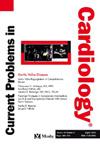健康孕妇的正常超声心动图表现:文献综述
IF 3
3区 医学
Q2 CARDIAC & CARDIOVASCULAR SYSTEMS
引用次数: 0
摘要
在怀孕期间,显著的生理变化导致心脏重塑和功能改变,尽管这些通常是产后可逆的。妊娠增加了心血管系统的需求,需要大量的适应,如心输出量(CO)、血浆量、卒中量(SV)和心率(HR)的增加,以及全身血管阻力(SVR)和平均动脉压的降低。这些适应对于满足母亲和胎儿的血液动力学需求至关重要,通常不同于用于评估心功能的标准超声心动图测量,这使得解释具有挑战性。准确识别正常超声心动图参数在怀孕期间是至关重要的建立检测病理变化的基线。如果及早发现与这些基线的偏差,可以帮助进行风险分层,并为心衰、心律失常或瓣膜疾病等疾病的临床管理提供信息。然而,许多现有的研究依赖于横断面设计,限制了他们提供全面的纵向见解的能力。对于孕妇来说,缺乏标准化的超声心动图参考值是一个关键的空白。这一人群独特的生理变化,包括增加的CO和心室尺寸,使使用非怀孕标准的超声心动图研究的解释复杂化。这一缺陷可能阻碍亚临床心血管改变的识别,延迟及时干预。妊娠特异性超声心动图参考值的发展对推进预防和个性化护理至关重要。这种量身定制的参考将提高诊断的准确性,促进妊娠相关心脏变化及其潜在病理含义的早期发现和管理。本文章由计算机程序翻译,如有差异,请以英文原文为准。
Normal echocardiographic findings in healthy pregnant women: A narrative review of the literature
During pregnancy, significant physiological changes occur that result in cardiac remodeling and altered functional performance, though these are generally reversible postpartum. Pregnancy increases the cardiovascular system's demand, requiring substantial adaptations such as elevated cardiac output (CO), plasma volume, stroke volume (SV), and heart rate (HR), alongside a reduction in systemic vascular resistance (SVR) and mean arterial pressure. These adaptations, essential to meet the hemodynamic needs of both the mother and fetus, often differ from standard echocardiographic measurements used to evaluate cardiac function, making interpretation challenging.
Accurate identification of normal echocardiographic parameters during pregnancy is crucial to establishing a baseline for detecting pathological changes. Deviations from these baselines, when recognized early, can assist in risk stratification and inform clinical management of conditions such as heart failure, arrhythmias, or valvular disease. However, many existing studies rely on cross-sectional designs, limiting their ability to provide comprehensive longitudinal insights.
For pregnant women, the lack of standardized echocardiographic reference values represents a critical gap. The physiological changes unique to this population, including increased CO and ventricular dimensions, complicate the interpretation of echocardiographic studies using non-pregnant norms. This shortfall can hinder the identification of subclinical cardiovascular alterations, delaying timely intervention. The development of pregnancy-specific echocardiographic reference values is essential for advancing preventive and personalized care. Such tailored references would improve diagnostic accuracy, facilitating early detection and management of pregnancy-related cardiac changes and their potential pathological implications.
求助全文
通过发布文献求助,成功后即可免费获取论文全文。
去求助
来源期刊

Current Problems in Cardiology
医学-心血管系统
CiteScore
4.80
自引率
2.40%
发文量
392
审稿时长
6 days
期刊介绍:
Under the editorial leadership of noted cardiologist Dr. Hector O. Ventura, Current Problems in Cardiology provides focused, comprehensive coverage of important clinical topics in cardiology. Each monthly issues, addresses a selected clinical problem or condition, including pathophysiology, invasive and noninvasive diagnosis, drug therapy, surgical management, and rehabilitation; or explores the clinical applications of a diagnostic modality or a particular category of drugs. Critical commentary from the distinguished editorial board accompanies each monograph, providing readers with additional insights. An extensive bibliography in each issue saves hours of library research.
 求助内容:
求助内容: 应助结果提醒方式:
应助结果提醒方式:


